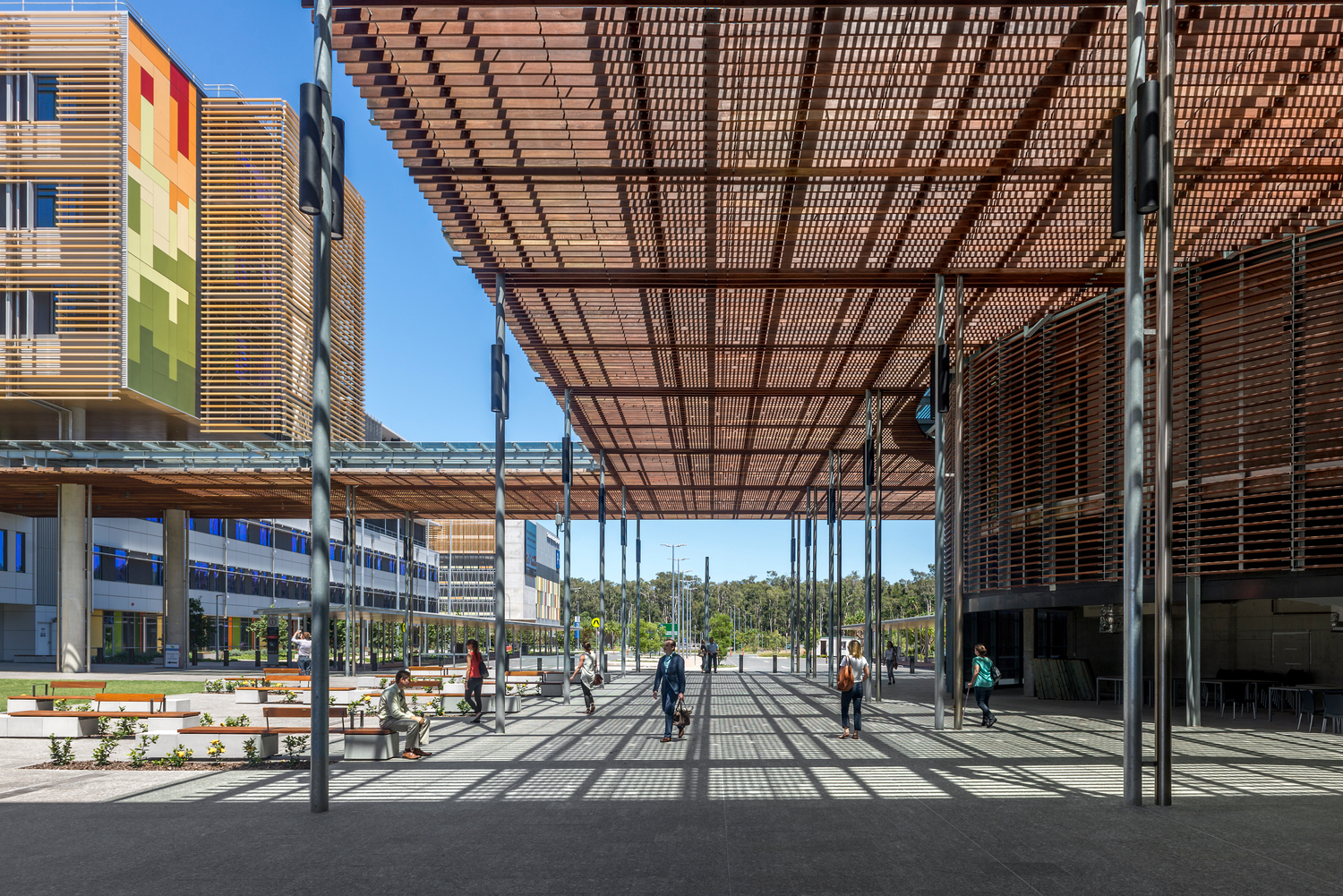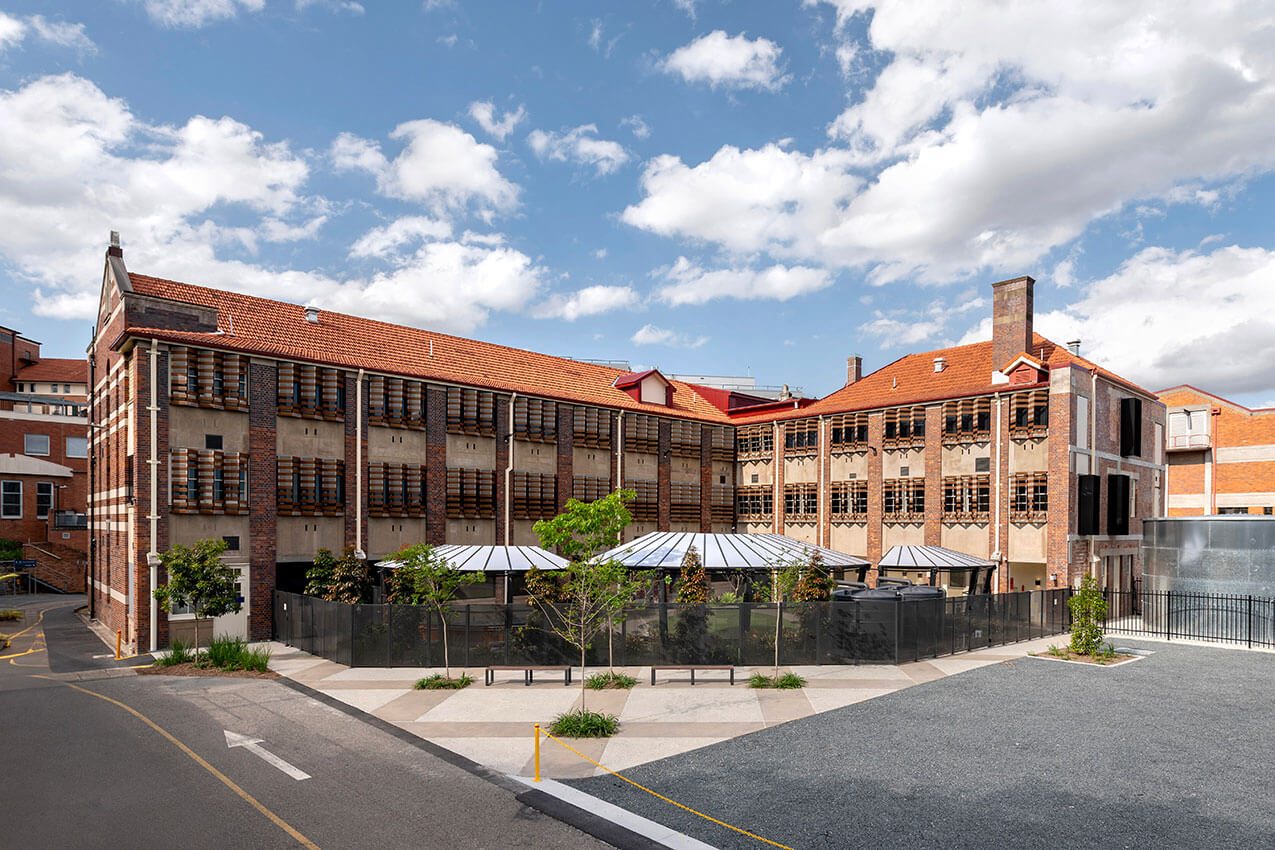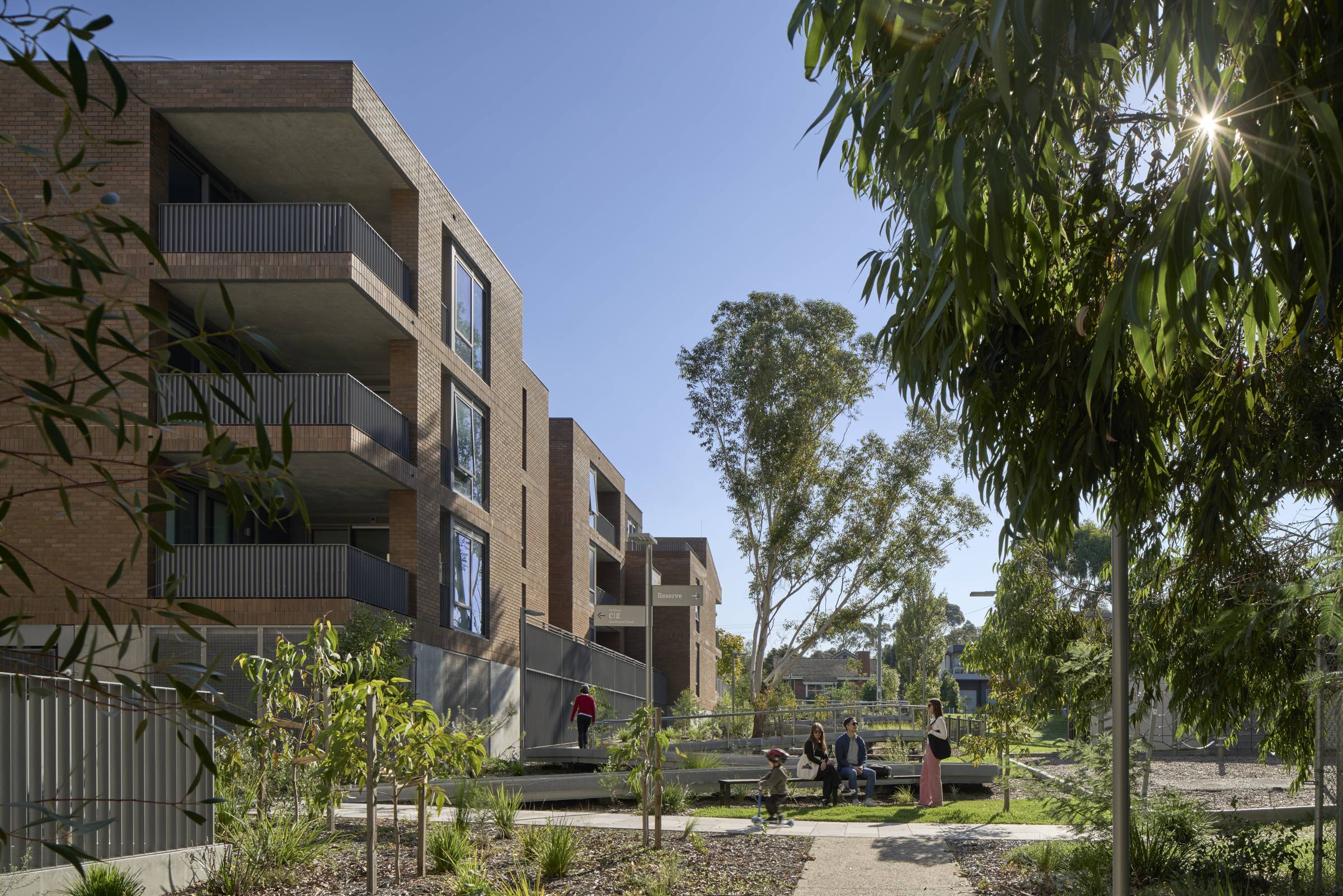
What were some of the big issues you explored on the tour with Lendlease and the Care is Care study team?
The main issues are universal. It’s about the need to consolidate and manage acute and sub-acute health services while we progress care in the home and in primary care facilities. Chronic disease, an aging population, and international challenge of staff shortages are burdens we all carry.
In Denmark and other countries, they’re building new, highly specialised facilities that reflect the changing role hospitals will play in our future healthcare system. With an increasing reliance on outpatient treatment and primary care, the architecture of hospitals and technological support systems will require greater innovation. I visited some of these consolidated health facilities – AZ Groeninge Hospital in Kortrijk, Belgium, and the North Zealand Hospital Development in Hillerod, Denmark, which consolidates three to four regional hospitals.
Internationally, if we can replace a significant fraction of hospital admissions with outpatient treatment, hospitals will be freed up to focus their highly specialised services on treating critically ill or injured people. This means the primary healthcare sector will need to offer less specialised, less intrusive treatments at a lower cost.
The design and use of new hospitals can lead to real improvements in healthcare and treatment.
“We can achieve a transformation not only by constructing newer and more flexible buildings, but by designing hospital environments that support a new model of care for the future.”
North Zealand Hospital Development in Hillerod, Denmark

What do these new models of care look like?
Generally, care must move out into the community through more virtual and primary/preventative care. We can consolidate expensive assets through a hub and spoke model that puts the patient and care at the centre, and embraces the home as a place of healing.
I saw this realised in Health Denmark’s ICURA program and home-based postnatal care program. More than 20% of Danish municipalities use sensor-based solutions by ICURA for digitally enhanced home training. These solutions motivate patients and improve the quality of home training following orthopaedic surgeries and other surgeries requiring rehabilitation. Feedback for the healthcare professional optimises and qualifies the course of treatment, which benefits both patients and therapists. A randomised clinical study indicated that the ICURA exercise had the same effect as conventional programmes – even with a 50% reduction in physical attendance at the health clinic. This shows that the four health municipalities in Denmark can handle more patients due to the reduced pressure on public training facilities simply because patients train more in their own homes.
Some other highlights from Denmark included our visit to Fredericia Sundhedshus Hospital, where we met with patients on their monthly hospital visit. This helped us understand this technology since we could view it being used.
At the Hans Christian Andersen Children’s Hospital located adjacent to Odense University Hospital, we heard from one of the doctors working on a neonatal tele-homecare program. For most preterm infants, the last weeks of hospital admission revolve around tube feeding and the establishment of breastfeeding. In many regions, the neonatal homecare program allows infants to remain at home for both purposes, with regular home visits from neonatal nurses.
The program also benefits parents, who often express a need for communication and guidance rather than hands-on support – something that can be delivered via telemedicine. We observed a young Danish couple with their firstborn baby participating from home, and we could see the benefits felt by both the parents and hospital staff.
Programs like these could potentially work in Australia too.
North Zealand Hospital Development in Hillerod, Denmark
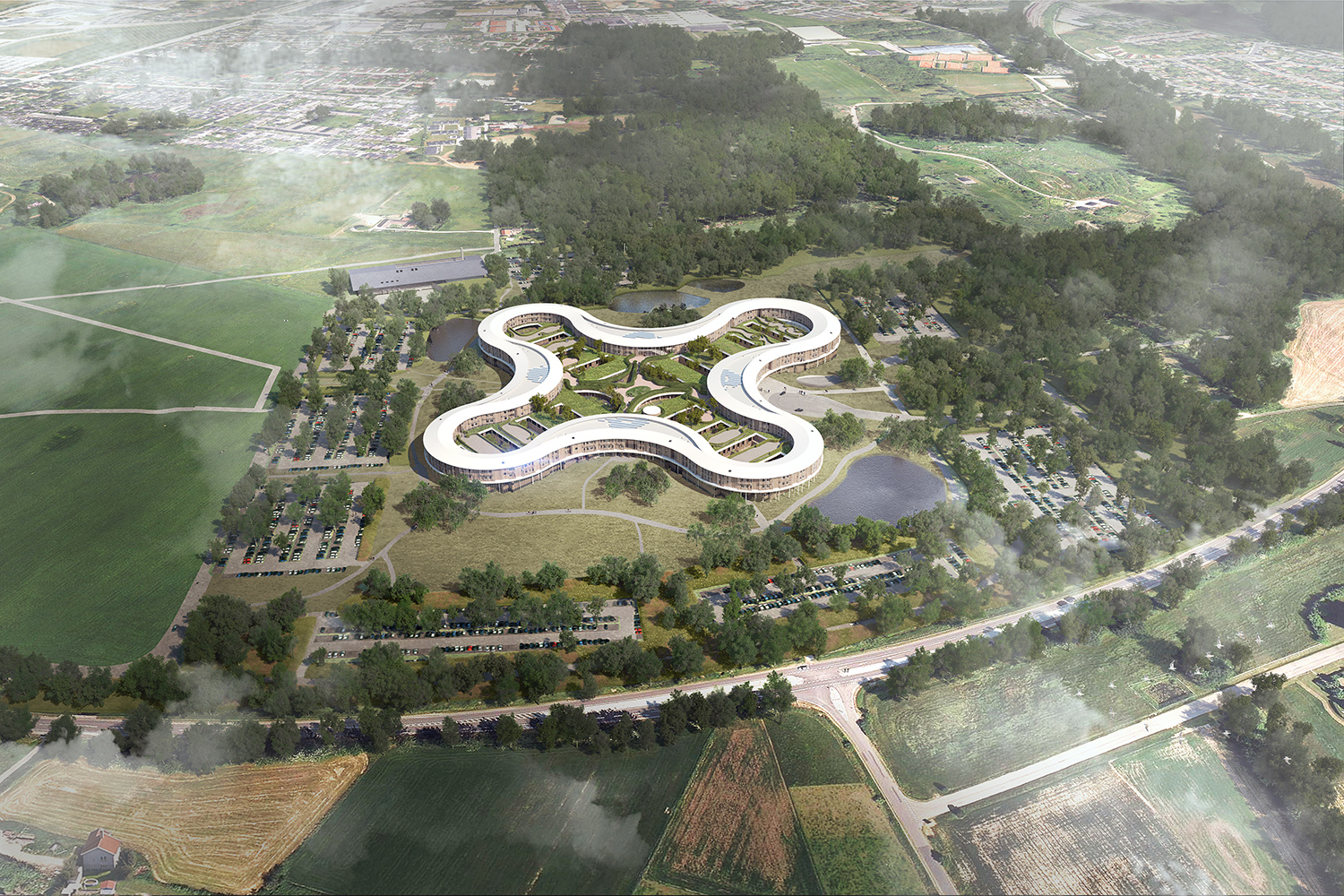
How is technology supporting new models of care in and out of hospitals?
We’re seeing an increase in the use of digital and technology innovations to achieve efficiencies and improved productivity in the way hospitals respond to people’s health requirements.
“National Virtual Care and Telemedicine in the home and primary care environment have significantly reduced pressure on acute care facilities through remote monitoring and wearables.”
These innovations were critical to consolidating hospital sites in Denmark – a country that has seen acute hospitals reduce from 40 to 21 since 2007, when the Future Hospital Program was first launched. Studies and national reviews have concluded that the program is on track to improve clinical performance, utilise virtual care, and provide more sustainable healthcare facilities.
Mobile robots are also being used to handle logistical tasks. They ease staff workloads and frees up time for patient care. Self-driving autonomous mobile robots (AMRs) deliver laundry, transport blood samples to labs, and bring medicines to wards. This new generation of automated, guided vehicles can be easily retrofitted and applied to existing and new hospitals. For example, there could be more shared lifts and corridors for staff and visitors. We’re already seeing growth of this technology in Australia’s public and private hospitals.
“In all the facilities we visited, there was a move toward robotic pathology and pharmaceutical solutions.”
For example, AZ Groeninge Hospital in Kortrijk, Belgium was finalising a fully automated pharmaceutical system that uses robotics for all phases – loading dock receipt and pickup, issuing and dispatching of unit doses, and logistics related to on-ward, automated dispensing units. This approach seems to be leading to more efficient distribution and the ability to meet the specific requirements of patients. It’s also reducing medical errors. These technologies are already being rolled out in Australian facilities, from end to end.
All the hospitals we visited are using health network management systems to support their planning and capacity processes. These systems allow clinicians, coordinators, and administrators to gauge capacity and take into account the number of patients admitted and discharged on each ward, across all departments and regions. With an overview of the region’s total capacity, it is possible to anticipate the ebbs and flows of patient activity and respond accordingly. This is particularly relevant to the Australian context. It could be applied to geographically extended and concentrated metropolitan health networks via centralised command centres that curate patient, logistical, and service flows within the hub and spoke model I mentioned earlier.
Amphia Hospital, Breda, the Netherlands

Were the hospitals you visited making strides in sustainability?
The New Karolinska Hospital in Stockholm has achieved Leed Gold status. Its energy is supplied through a combination of district heating and cooling, a dedicated geothermal plant, and recycled energy from ventilation exhausts. The large geothermal plant alone satisfies 65% of the hospital’s demand for heating and cooling. As a result, its need for purchased energy is 40% below the maximum in building norms. Electricity in the new hospital comes from renewable energy sources to the greatest degree possible.
“Recycling and building flexibility are also critical issues, allowing for a change of use rather than demolition.”
Statutory requirements for construction recycling have been set throughout the regions we visited, and we could see this in action on all the construction and refurbishment sites.
This focus on sustainability is reflected in our own experience working on the Sunshine Coast University Hospital, which achieved the first 6 Star Green Star certification in Australia, with 98% of construction waste recycled. After seeing what’s happening at New Karolinska Hospital – and successfully delivering a benchmark hospital here – I believe this needs to be the path ahead for Australia.
“We also need to look at sustainability holistically. The health and wellbeing of clinical and non-clinical staff are equally important pieces of the puzzle. A mentally fulfilling environment will help us guarantee a strong model of care for the future.”
The New Karolinska Hospital in Stockholm
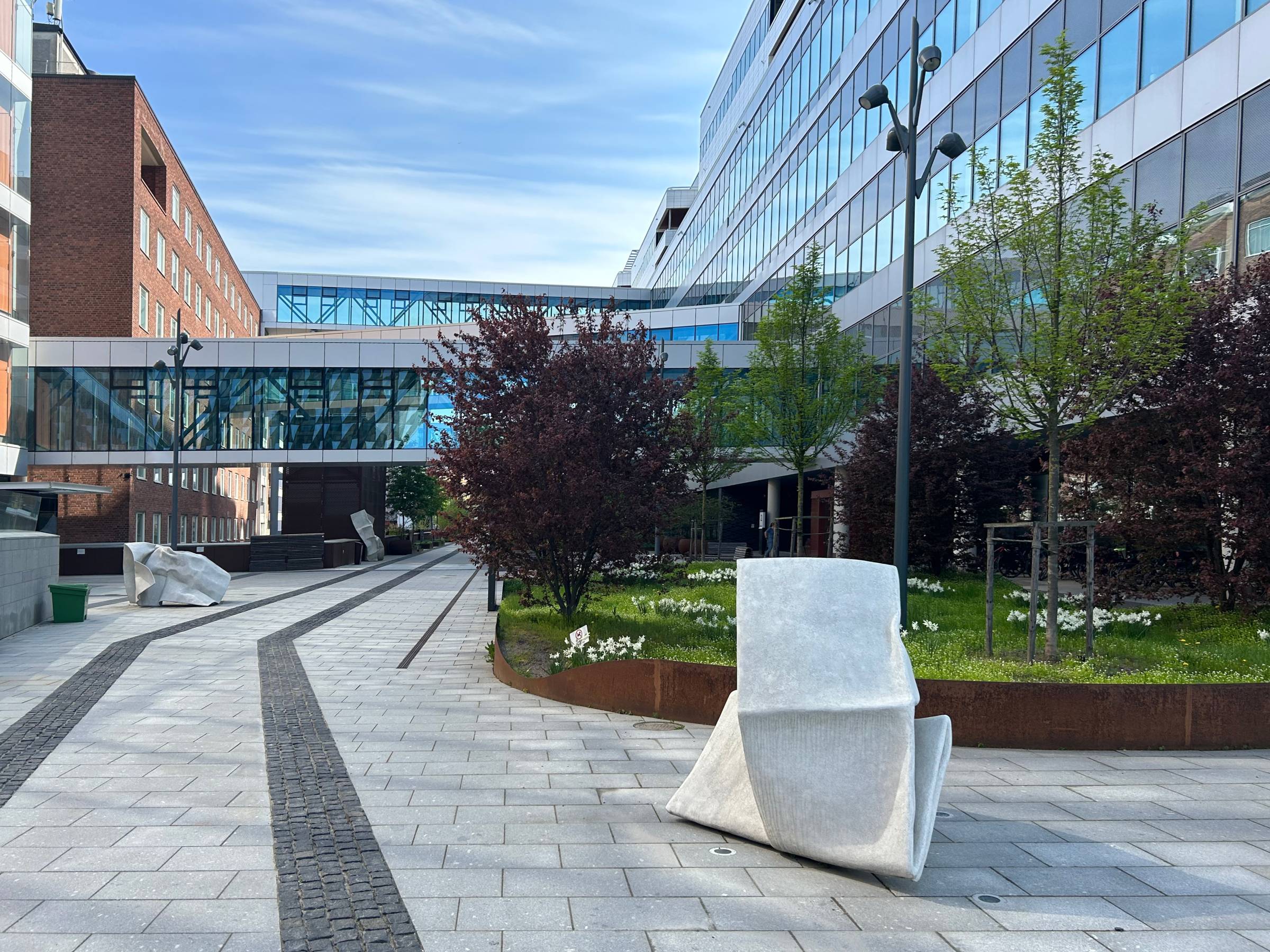

Sunshine Coast University Hospital for Queensland Health designed by Architectus in association with HDR
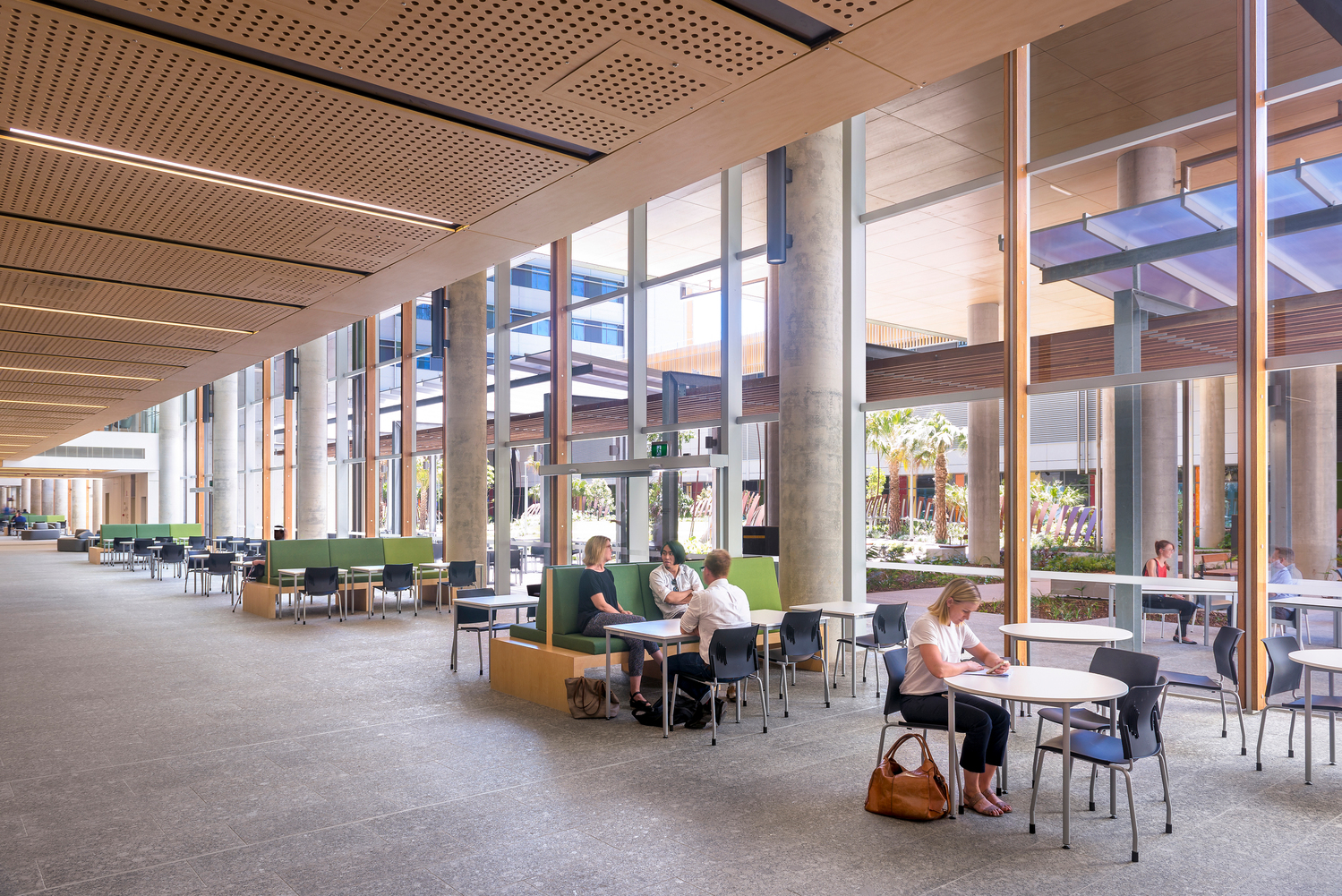
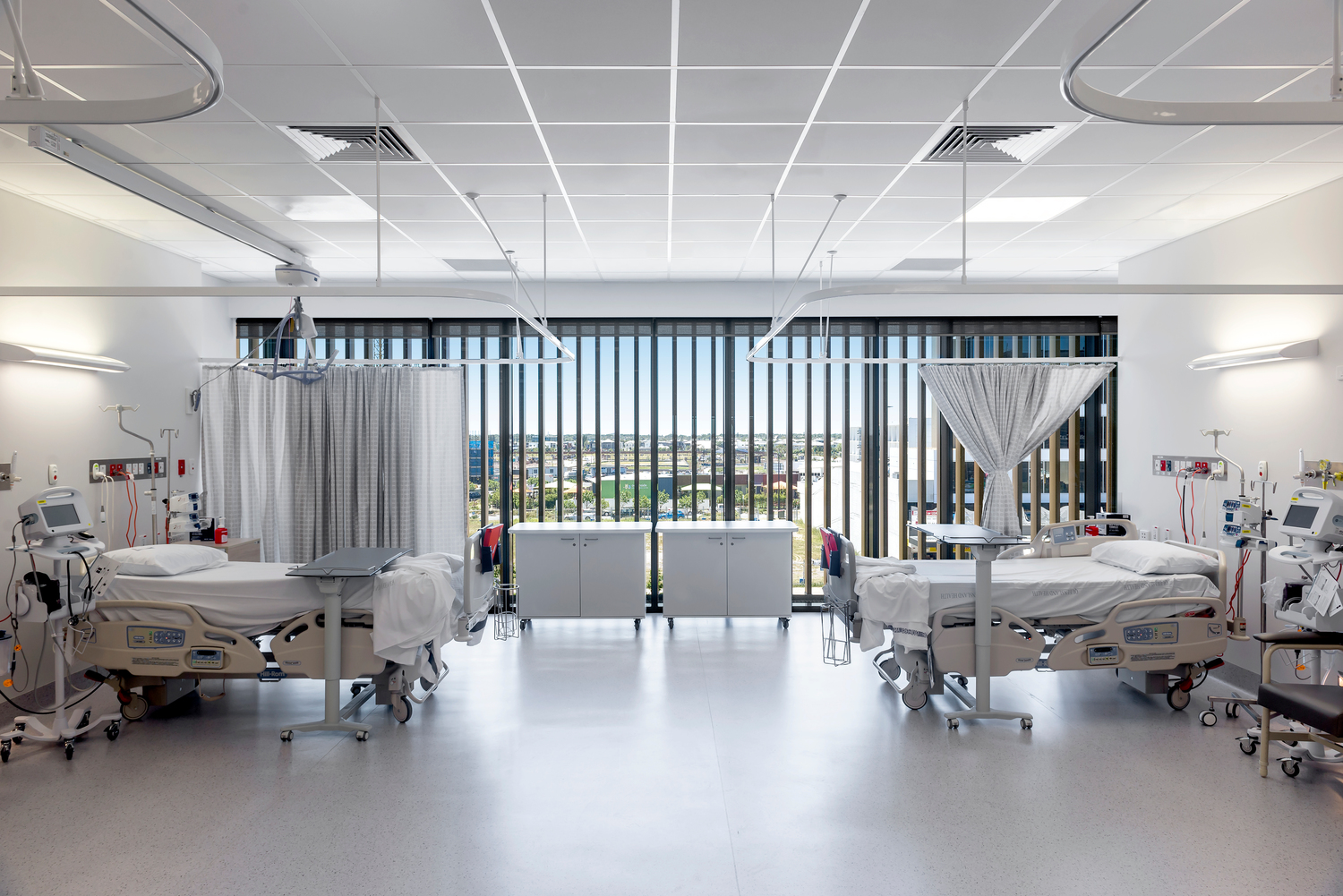
To learn more, download the complete Care is Care study
[1] The Care is Care Industry Collaborative is a group of representatives from organisations that are confident about the opportunities that virtual and digital healthcare can deliver to provide equitable and sustainable access to health and care that delivers impact for consumers, communities and health organisations.The four key areas of focus are:
Models of Care and Care delivery
Change management and adoption
Digital tools and data analytics
Infrastructure and design
Together, we are studying and learning from some of the industry best to understand how to shift the dial to sustain and optimise virtual and digital healthcare to address the most confounding challenges currently facing the health care sector. These include:
Ensuring equity of access for priority populations
Addressing workforce supply challenges
Delivering environmental and financial sustainability
